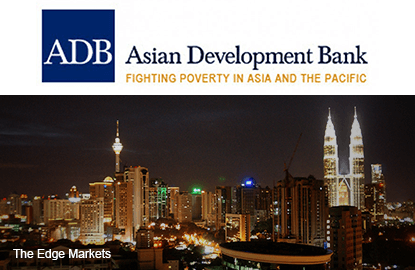
KUALA LUMPUR (April 22): The Asian Development Bank's (ADB) total operations rose to US$27.17 billion (about RM106 billion) in 2016, the highest in its history.
In a statement today in conjunction with the release of ADB's 2015 Annual Report (2015 AR), the bank said the total included US$16.29 billion in approvals for loans and grants, US$141 million for technical assistance and US$10.74 billion for co-financing, which increased by a record 16%.
It said disbursements, a key factor in improving aid effectiveness, also hit a new record of US$12.22 billion in 2015, an increase of 22% over the previous year.
The ADB said private sector operations, a major focus of its long-term strategy for boosting growth in the region, jumped to US$2.63 billion from US$1.92 billion in 2014.
In his 2015 AR message, ADB president Takehiko Nakao said the bank's record performance in 2015 reflected a growing demand from the Asia and Pacific region for ADB's development assistance.
"Poverty persists despite the region's impressive growth, and infrastructure and other development needs are monumental," he said.
ADB estimates the region needs about US$800 billion for infrastructure investments annually, amounting to about 6% of gross domestic product, compared with current investments of about 2% to 3% in many countries in Asia and the Pacific.
It said the funding deficit is a key cause of constraints on economic growth and poverty reduction in the region.
2015 AR focuses on ADB's response to help the region address these challenges and to implement the ambitious new development agenda adopted by the international community in 2015.
The ADB has committed to playing a central role in financing the Sustainable Development Goals, signed in September 2015, and supporting the new climate deal forged during the 21st Conference of the Parties on climate change in Paris in December, the 2015 AR says.
To deliver on this commitment, the ADB in 2015 announced it was significantly scaling up its capacity to provide more financing through a merger of its concessional Asian Development Fund loan portfolio with its ordinary capital resources balance sheet.
Starting from January 2017, this path-breaking reform will almost triple ADB's equity base and allow it to increase assistance to developing member countries by up to 50%, and to its poorest members by up to 70%.